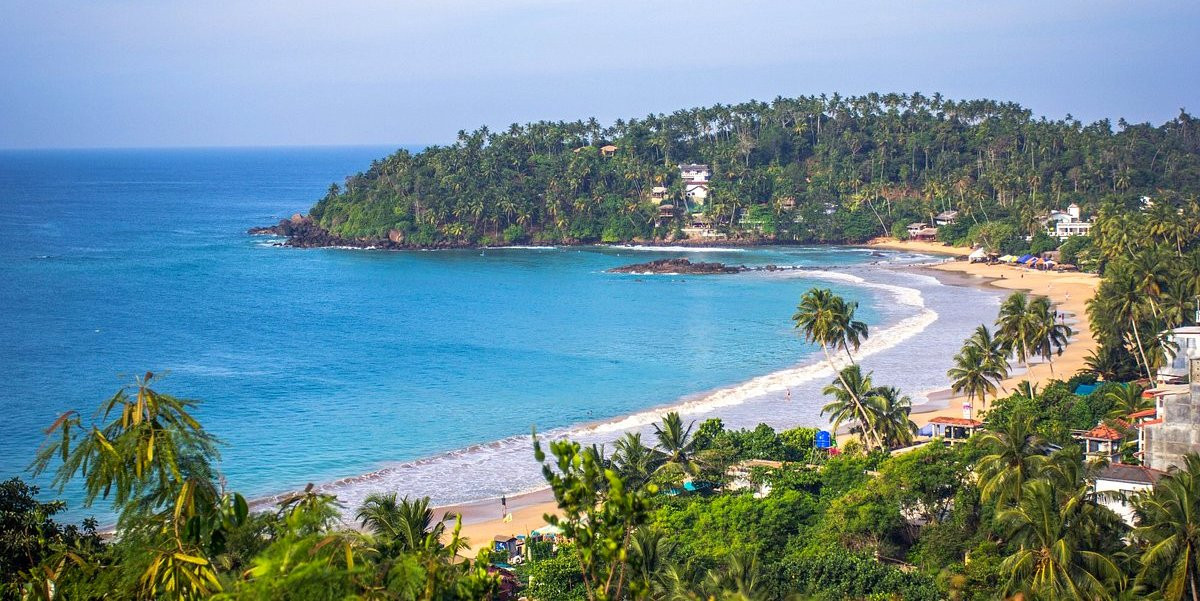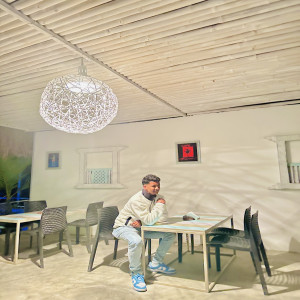Gangaramaya Temple
Gangaramaya Temple is one of Colombo's most iconic and revered sites, blending spiritual, architectural, and cultural significance in one fascinating location. This Buddhist temple complex goes beyond being just a place of worship—it’s a centre of learning and a showcase of intricate art and architecture.
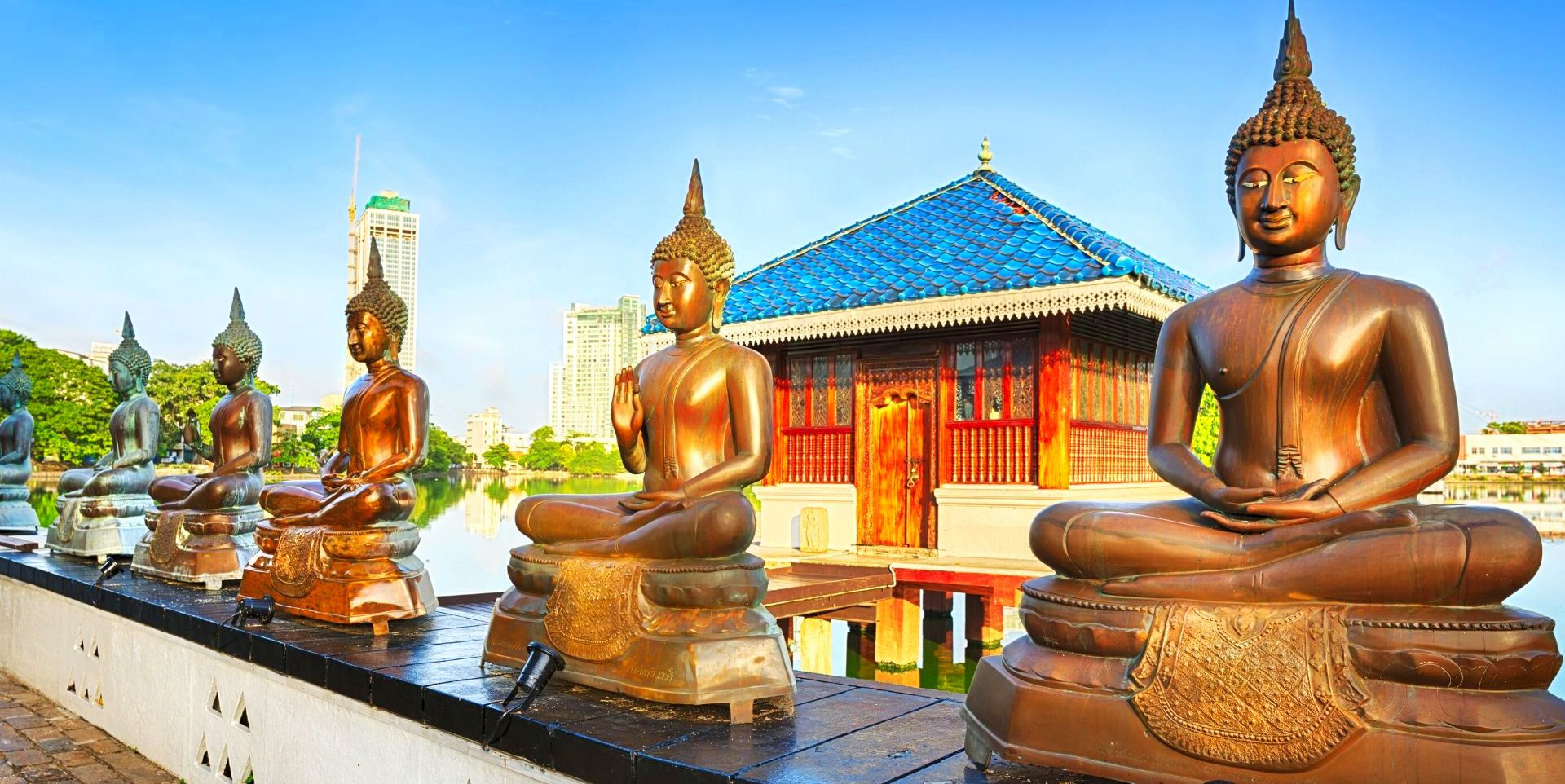
Key Features of Gangaramaya Temple
-
Rich History: Founded in the late 19th century, the temple has grown from a modest structure to a sprawling complex that includes several halls, a museum, and a library.
-
Architectural Diversity: The temple displays a mix of Sri Lankan, Thai, Indian, and Chinese architectural influences. This eclectic design approach makes it stand out from other temples in the region.
-
Buddhist Museum: One of the highlights of Gangaramaya Temple is its museum that houses an extensive collection of Buddhist artefacts from around the world, including old manuscripts, statues, and gifts from devotees.
-
Vibrant Celebrations: The temple is central to the celebration of the Navam Perahera festival held in February each year. This vibrant festival features elephants dressed in lavish garbs, traditional dancers, drummers, and a large procession that attracts both locals and tourists.
-
Educational and Charitable Work: The temple is also known for its educational and social services, including a vocational training centre. It plays a significant role in supporting community development projects.
-
Location and Accessibility: Situated near Beira Lake in the heart of Colombo, the temple is easily accessible and serves as a peaceful escape from the hustle and bustle of the city.
Visiting Gangaramaya Temple offers a unique glimpse into the cultural and spiritual life of Colombo, making it a must-visit for anyone interested in the history and religious practices of Sri Lanka. Whether you're drawn to its rich history, beautiful art, or the serene atmosphere, Gangaramaya provides a profound experience that reflects the diverse fabric of Colombo's heritage.
Colombo National Museum
The Colombo National Museum, established in 1877 by Sir William Henry Gregory, the British Governor of Ceylon (now Sri Lanka), is the largest museum in the country and a monumental repository of Sri Lankan history, culture, and heritage. Nestled in the heart of Colombo, surrounded by the lush greenery of Viharamahadevi Park, the museum is an essential visit for anyone interested in delving deep into the rich tapestry of this island nation's past.
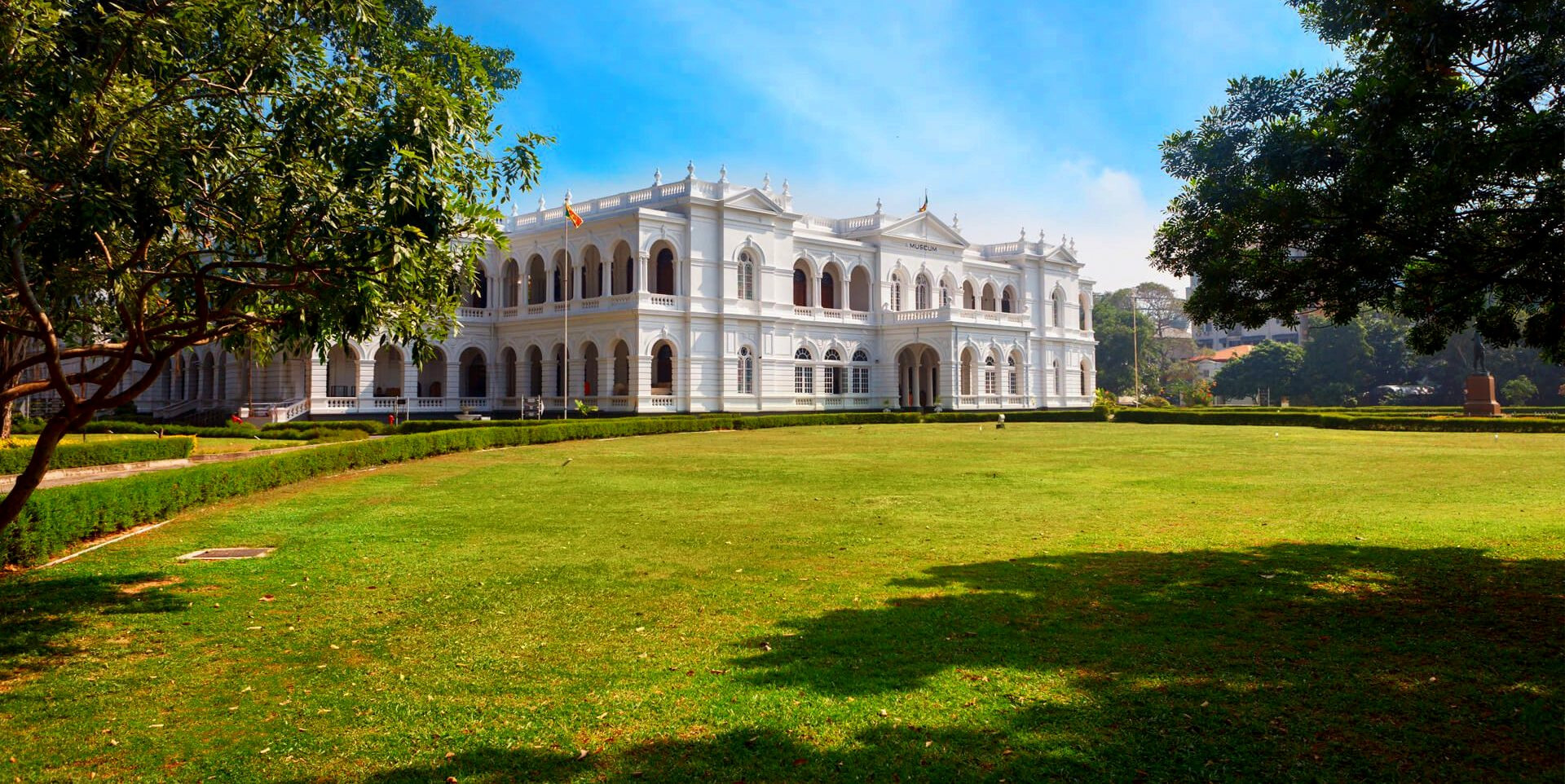
Key Highlights of the Colombo National Museum
-
Vast Collection: The museum's extensive collection includes regal artefacts such as the throne and crown of the Kandyan monarchs, ancient paintings, sculptures, and intricately carved masks. It also houses an impressive array of antique furniture and china that offers a glimpse into the colonial history of Sri Lanka.
-
Architectural Grandeur: The building itself is a stunning example of Italian architecture, featuring a striking white facade that stands out amidst the green surroundings. Its galleries are lined with long corridors, arched doorways, and gabled roofs, which together create a distinctly regal atmosphere.
-
Rare Manuscripts and Literature: Among its treasures, the museum contains a valuable collection of ancient manuscripts written on palm leaves, chronicling important historical, religious, and medicinal insights from various eras of Sri Lankan history.
-
Natural History Section: For nature enthusiasts, there is a natural history section within the museum that displays a diverse range of Sri Lanka's flora and fauna, including a skeletal structure of a blue whale, which is a major draw.
-
Cultural Exhibits: The museum regularly hosts temporary exhibits that highlight various aspects of Sri Lankan culture, from traditional crafts and costumes to pre-colonial artefacts, providing a comprehensive overview of the island's diverse cultures.
-
Educational Programs: The museum is not just a tourist attraction but also an educational hub, offering various programs and workshops that help visitors understand and appreciate the significance of the exhibits and the history of Sri Lanka.
Visiting the Colombo National Museum is like stepping back in time. Each hall and exhibit tells a story, offering insights into the grandeur, struggles, and evolution of this island nation. Whether you're a history buff, a cultural enthusiast, or simply curious, the museum provides a profound, enlightening experience that enriches your understanding of Sri Lanka.
Galle Face Green
Galle Face Green is a historic urban park in the heart of Colombo, stretching half a kilometre along the coast, offering locals and tourists alike a spacious outdoor venue for leisure and social activities. Established in 1859 by Governor Sir Henry George Ward, this iconic promenade epitomises the colonial legacy and contemporary spirit of Colombo.
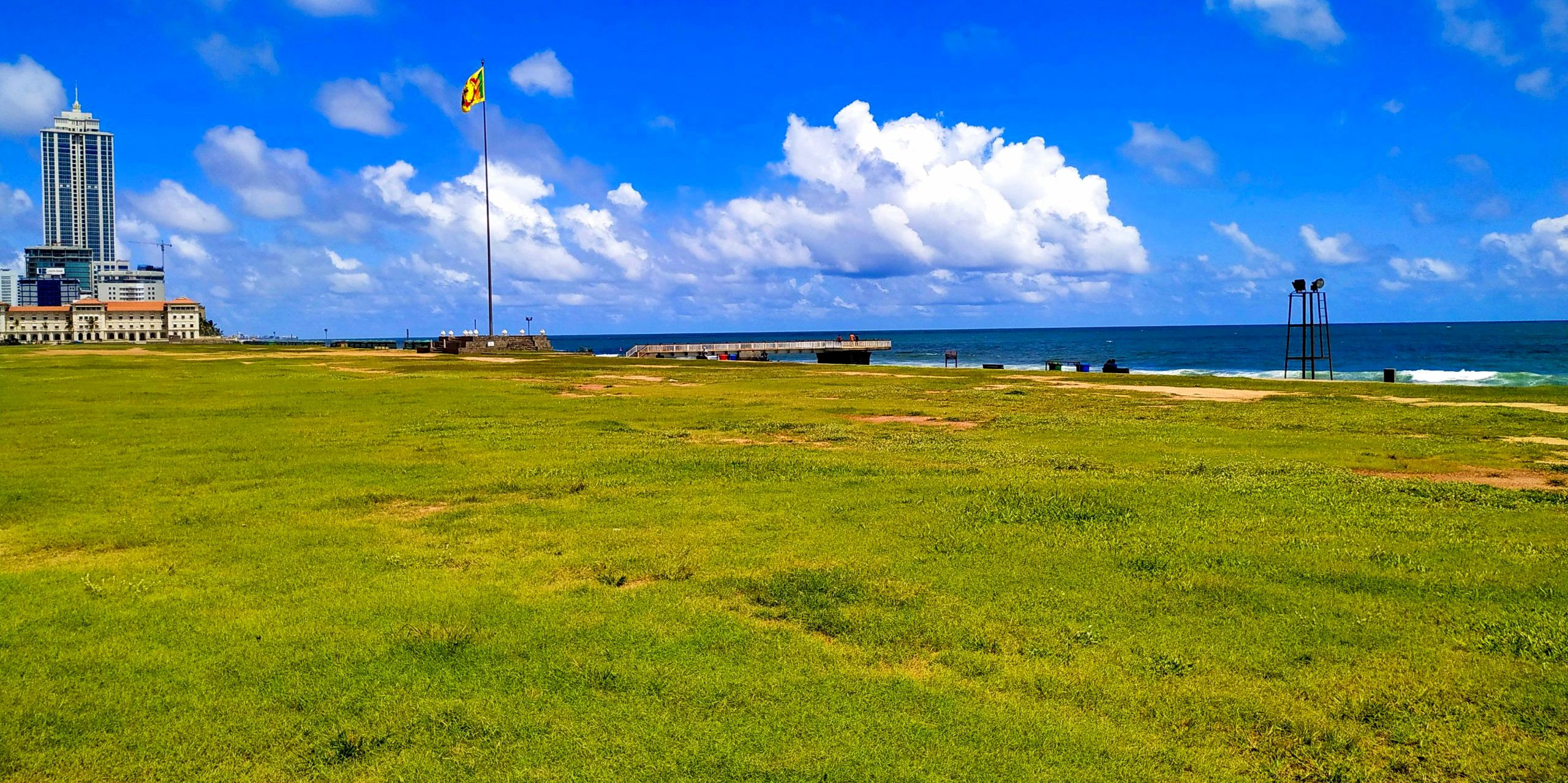
Key Features of Galle Face Green
-
Scenic Oceanfront: Galle Face Green provides stunning views of the Indian Ocean. It's a popular spot for couples, families, and friends to gather, especially during sunset when the sky paints vibrant colours over the watery horizon.
-
Culinary Delights: The park is famed for its street food vendors who sell a variety of local snacks. Among these, 'isso wade' (shrimp fritters) is a must-try. These vendors also offer an array of treats from spicy pickled fruits to crispy snacks, providing a true taste of Sri Lankan street food culture.
-
Cultural and Social Hub: Throughout the year, Galle Face Green serves as a venue for numerous events including concerts, food festivals, and kite flying competitions. It is a melting pot of social and cultural activities that reflect the vibrant life of Colombo.
-
Historical Significance: The park has a rich history, originally serving as a ceremonial ground for horse racing and golf during the British colonial era. Today, it stands as a testament to Colombo's colonial past and its evolution into a bustling, modern metropolis.
-
Ideal for Leisure Activities: The wide-open space is perfect for jogging, picnics, and kite flying, making it one of the best Colombo outdoor activity areas. It’s also a fantastic place for photographers looking to capture the essence of Colombo’s public life and scenic beauty.
-
Accessibility and Development: Easily accessible from various parts of the city, Galle Face Green has undergone several phases of development to enhance its appeal while preserving its natural charm. It's equipped with walking paths, seating areas, and improved lighting, ensuring a safe and enjoyable environment for visitors.
Visiting Galle Face Green offers a refreshing break from the hustle and bustle of city life. It is not only a place to relax and enjoy the natural beauty but also a venue where you can immerse yourself in the local culture and lifestyle. Whether you're watching a spectacular sunset, enjoying delicious street food, or simply soaking in the lively atmosphere, Galle Face Green is a quintessential Colombo experience.
Pettah Market
Pettah Market is one of the most vibrant and bustling commercial hubs in Colombo, renowned for its lively atmosphere and a wide array of goods. This sprawling market encompasses several streets and is a true reflection of the city’s multicultural makeup, offering everything from fresh produce to electronics, textiles, and jewelry.
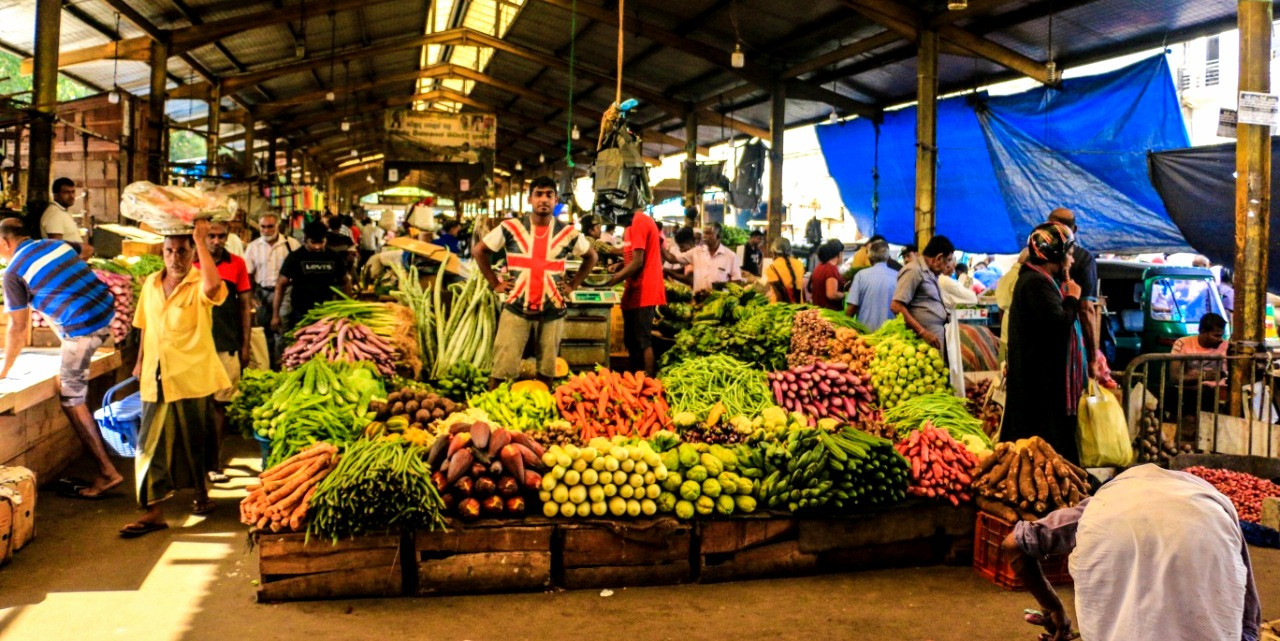
Key Features of Pettah Market
-
Diverse Shopping Experience: Pettah Market is famous for its variety. You can find virtually anything here, including clothing, footwear, accessories, household items, electronics, and more. The market is divided into different sectors, each specialising in specific types of goods, making it easier for shoppers to find what they're looking for.
-
Cultural Melting Pot: The market's environment is a dynamic blend of cultures and communities. It's not uncommon to hear a mix of languages and see a variety of religious and cultural practices coexisting. This diversity is also reflected in the products available for sale, from traditional Sri Lankan crafts to items from around the world.
-
Vibrant Atmosphere: The energy at Pettah Market is palpable. The streets are always bustling with vendors calling out their prices, shoppers haggling for the best deals, and the colourful sights of diverse goods displayed in every corner. It’s an experience that stimulates all the senses.
-
Historical Significance: Pettah has a rich history as a trading district. Its roots can be traced back to the times when the area was a focal point for commerce under the Dutch and British colonial rule, which adds a layer of historical depth to the shopping experience.
-
Food and Refreshments: The market also offers a variety of street food vendors, serving local delicacies that provide a quick, tasty, and affordable way to recharge during a shopping spree.
-
Strategic Location: Located adjacent to the Colombo Fort area, Pettah Market is easily accessible via public transport, making it a convenient stop for both locals and tourists.
A visit to Pettah Market is not just about shopping; it’s about experiencing the bustling heart of Colombo. The market offers a unique opportunity to dive deep into the local culture, interact with the friendly vendors, and witness the day-to-day dynamics of one of Colombo’s oldest and most characterful areas. Whether you're looking for specific items to purchase or just want to take in the vibrant street scenes, Pettah Market delivers a memorable and authentic Colombo experience.
Beira Lake
Beira Lake is a serene oasis nestled in the heart of Colombo, offering a tranquil escape from the urban hustle and bustle. This picturesque body of water has a rich history dating back to the colonial era and serves as a central feature in the city’s landscape, providing recreational and aesthetic value to both locals and tourists.
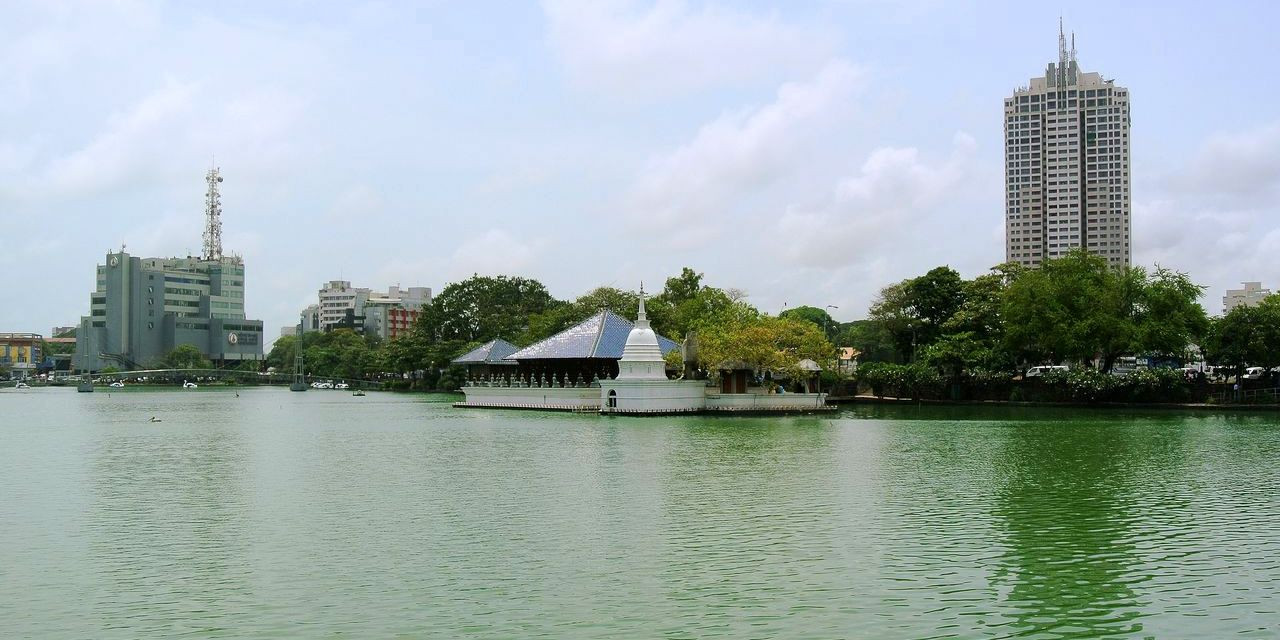
Key Features of Beira Lake
-
Scenic Beauty: The lake is surrounded by lush greenery and has several islands, including one that houses the Simamalaka Shrine, which was built from donations by a Muslim trader and is accessible via a quaint bridge. The calm waters and the verdant surroundings make Beira Lake a perfect spot for photography and peaceful walks.
-
Boating and Recreation: One of the most popular activities at Beira Lake is boating. Visitors can rent paddle boats and enjoy a leisurely ride across the lake, which offers a different perspective of the city skyline and the chance to observe aquatic birds and other wildlife.
-
Cultural Significance: The lake is a significant cultural landmark in Colombo. It hosts the annual Navam Perahera, a vibrant and colorful festival held by the Gangaramaya Temple. This event features elaborate floats, traditional dancers, drummers, and elegantly decorated elephants parading around the lake, creating a spectacular cultural display.
-
Relaxing Environment: The area around Beira Lake is designed to provide a relaxing environment for visitors. There are well-maintained paths for walking and jogging, benches to sit and enjoy the view, and shaded areas perfect for picnics.
-
Central Location: Beira Lake’s central location makes it easily accessible from various parts of Colombo. It’s close to several key attractions, including the Gangaramaya Temple and the Seema Malaka Temple, enhancing its appeal as a starting point for exploring the city.
-
Environmental and Urban Importance: The lake plays an important role in the city’s ecology and urban planning. Recent efforts to clean and restore Beira Lake are part of broader initiatives to improve environmental conditions and promote sustainable tourism in Colombo.
Beira Lake is not just a place to visit; it's a place to experience tranquillity amidst the city's lively pace. Whether you’re engaging in a quiet boat ride, enjoying a leisurely stroll along its banks, or simply sitting back to watch a stunning sunset, Beira Lake offers a refreshing blend of natural beauty and cultural vibrancy in the heart of Colombo.
Slave Island Street Art
Slave Island, a neighbourhood in Colombo known for its rich history and cultural diversity, has recently transformed into a canvas for vibrant street art. This dynamic area showcases a collection of murals and graffiti that not only beautify the urban landscape but also convey powerful social and cultural messages.

Key Features of Slave Island Street Art
-
Cultural Expression: The street art in Slave Island offers a visual narrative of the community’s history, struggles, and hopes. Artists, both local and international, use this medium to reflect on various themes such as peace, diversity, and resilience, making the walls speak to both residents and visitors.
-
Artistic Diversity: The area features a wide range of artistic styles, from detailed portraits to abstract designs. This diversity not only highlights the talent of the artists but also adds a unique character to the neighbourhood, turning ordinary streets into open-air galleries.
-
Community Involvement: Many of the artworks are the result of community projects that involve residents, including youths. These initiatives help foster a sense of pride and ownership among the community members while also engaging them in urban beautification and cultural expression.
-
Urban Regeneration: The proliferation of street art in Slave Island is part of broader urban regeneration efforts. These initiatives aim to revitalize areas that have been neglected or underdeveloped, using art as a tool to attract tourism, stimulate local businesses, and enhance the quality of life for residents.
-
Guided Art Tours: To fully appreciate the street art in Slave Island, visitors can take guided tours that explain the significance of the murals and the stories behind them. These tours provide deeper insights into the cultural and social contexts of the artworks.
-
Photography Hotspot: For photographers and social media enthusiasts, the street art in Slave Island offers a perfect backdrop for stunning and meaningful shots. Each piece of art not only serves as a visual delight but also as a conversation starter about the rich tapestry of life in Colombo.
Slave Island’s street art is a testament to the power of artistic expression in urban spaces. It not only beautifies the area but also serves as a medium for social commentary, cultural celebration, and community cohesion. For visitors looking to experience a different side of Colombo—one that blends history with contemporary culture—Slave Island’s street art is a must-see.
Ministry of Crab
Ministry of Crab is a celebrated culinary landmark located in the historic Old Dutch Hospital complex in Colombo. Established by renowned Sri Lankan cricketers Mahela Jayawardene and Kumar Sangakkara, along with chef Dharshan Munidasa, the restaurant has made a name for itself both locally and internationally for its dedication to serving fresh, locally-sourced crab and other seafood dishes. It ranks as one of Asia’s 50 Best Restaurants, making it a must-visit destination for food lovers visiting Colombo.
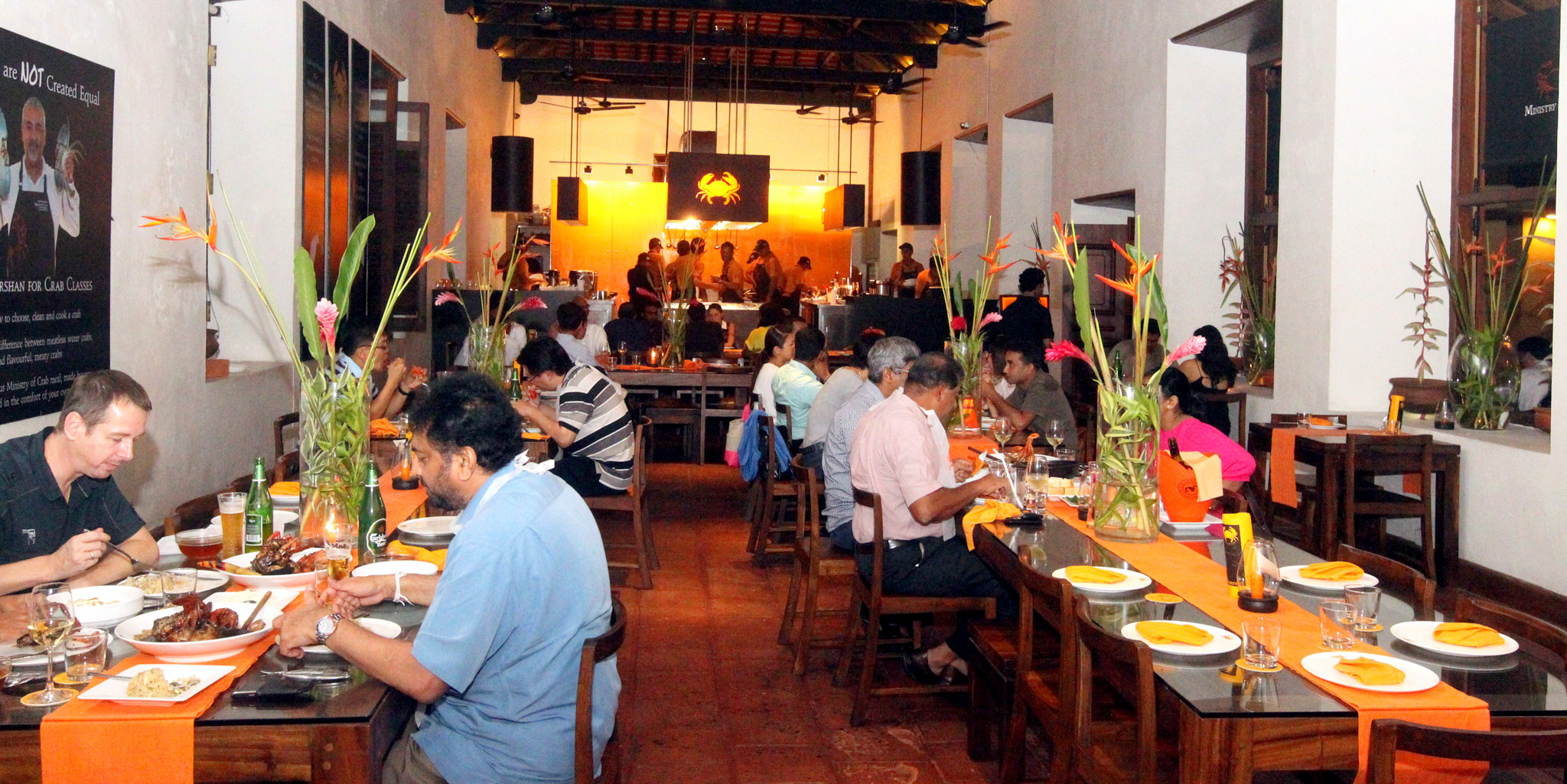
Key Features of the Ministry of Crab
-
Signature Dishes: The restaurant specialises in a variety of crab dishes cooked in unique styles, such as Chilli Crab, Pepper Crab, and Garlic Chilli Crab. The crabs are sourced directly from the waters around Sri Lanka and are available in sizes that range from 500 grams to the colossal “Crabzilla,” which weighs over 2 kilograms.
-
Luxury Dining Experience: Ministry of Crab offers a luxurious dining experience, combining elegant interiors that retain elements of the building’s colonial architecture with a modern and sophisticated dining setup. The ambience is enhanced by open kitchens where diners can watch their food being prepared.
-
Focus on Freshness and Quality: One of the restaurant's core principles is the use of fresh, high-quality ingredients. The seafood is sourced daily from local markets to ensure the highest quality and freshness, and no frozen seafood is used.
-
Innovative Cuisine: Beyond crabs, the menu features an array of gourmet seafood dishes, including prawn dishes, baked oysters, and the unique Sri Lankan ‘lagoon prawns’. Each dish is crafted to highlight the natural flavours of the ingredients, using simple yet effective cooking techniques.
-
Global Recognition: The Ministry of Crab has gained international acclaim for its high standards, innovative cuisine, and commitment to quality. It has been consistently ranked among the best restaurants in Asia, attracting food enthusiasts from all over the world.
-
Strategic Location: Situated in the Old Dutch Hospital, one of Colombo’s most vibrant and historic areas, the restaurant is perfectly located for both tourists and locals looking for a high-end dining experience after a day of sightseeing or shopping.
Ministry of Crab is more than just a restaurant; it’s an institution that celebrates the rich culinary traditions of Sri Lanka while providing a modern dining experience. For anyone visiting Colombo, a meal at Ministry of Crab is not just about enjoying the food—it’s about experiencing the passion and love for seafood that defines this unique establishment. Whether you're a crab aficionado or a curious foodie, Ministry of Crab promises an unforgettable culinary adventure.
Mount Lavinia Beach
Mount Lavinia Beach is one of the most popular coastal destinations near Colombo, renowned for its golden sandy beaches and the laid-back vibe. Located about 12 kilometres from the city center, this picturesque locale offers both locals and tourists a perfect escape from the hustle and bustle of urban life, making it an ideal spot for relaxation and leisure activities.
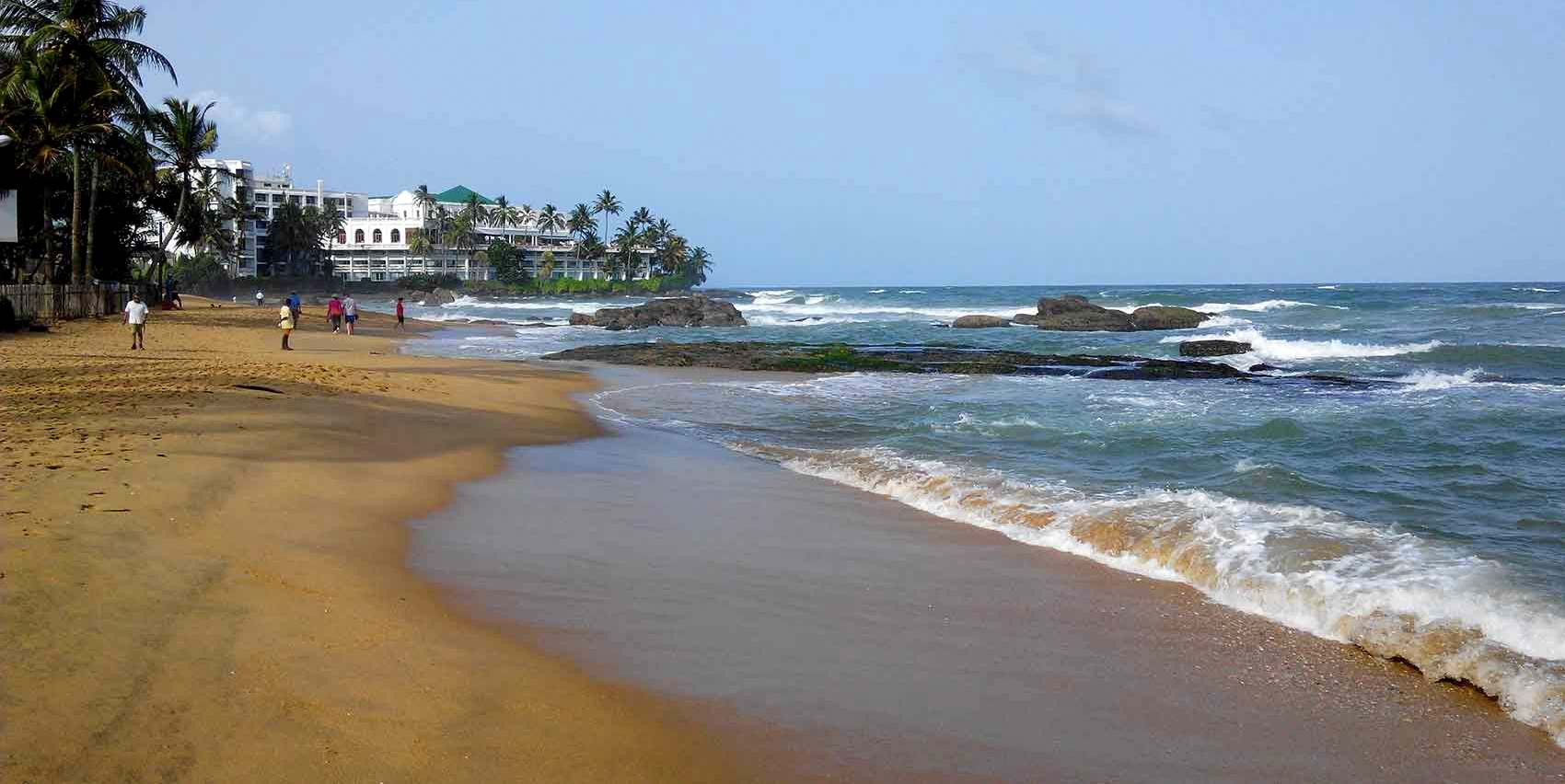
Key Features of Mount Lavinia Beach
-
Scenic Beachfront: The beach is famous for its beautiful stretch of golden sand and clear waters, providing a tranquil setting for beachgoers. It's a great place for swimming, sunbathing, and enjoying stunning sunsets that paint the horizon in vibrant hues.
-
Historical Significance: Mount Lavinia is not just known for its natural beauty but also for its colonial history. The area is named after a love story between a British Governor, Sir Thomas Maitland, and a local dancer named Lovina, which has contributed to the romantic allure of the location. The iconic Mount Lavinia Hotel, a colonial-era building originally the governor's residence, overlooks the beach and adds a historical charm to the area.
-
Vibrant Atmosphere: The beach is surrounded by a lively community with a range of restaurants, pubs, and cafes that offer delicious seafood and local dishes. The nightlife is quite active, with beach parties and music events frequently organised along the shore.
-
Water Sports and Activities: For adventure seekers, Mount Lavinia Beach offers a variety of water sports, including jet skiing, windsurfing, and snorkelling. The beach is also popular for beach volleyball and other sandy sports.
-
Accessibility and Amenities: The beach is easily accessible from Colombo via road or rail, making it a convenient day trip for city dwellers and tourists alike. The area is well-equipped with facilities such as showers, changing rooms, and sun loungers, ensuring a comfortable experience for all visitors.
-
Cultural Events: Mount Lavinia often hosts cultural festivals and events that showcase the diversity and traditions of Sri Lanka, making it a cultural hub in addition to a recreational spot.
Mount Lavinia Beach is more than just a beach; it's a blend of natural beauty, history, and culture. Whether you're looking to unwind by the sea, indulge in fresh seafood, or partake in lively beach activities, Mount Lavinia offers a comprehensive beach experience that caters to all tastes and preferences. Its charm and accessibility make it a favourite among both tourists and locals, ensuring that every visit is memorable.
Wolvendaal Church
Wolvendaal Church is one of the oldest and most significant Dutch colonial-era buildings in Colombo, Sri Lanka. Established in 1749, this historic Protestant church stands as a testament to the European influence on Sri Lanka during the colonial period. Its unique architectural style and preserved artifacts make it a must-visit for those interested in the history and architectural heritage of Colombo.
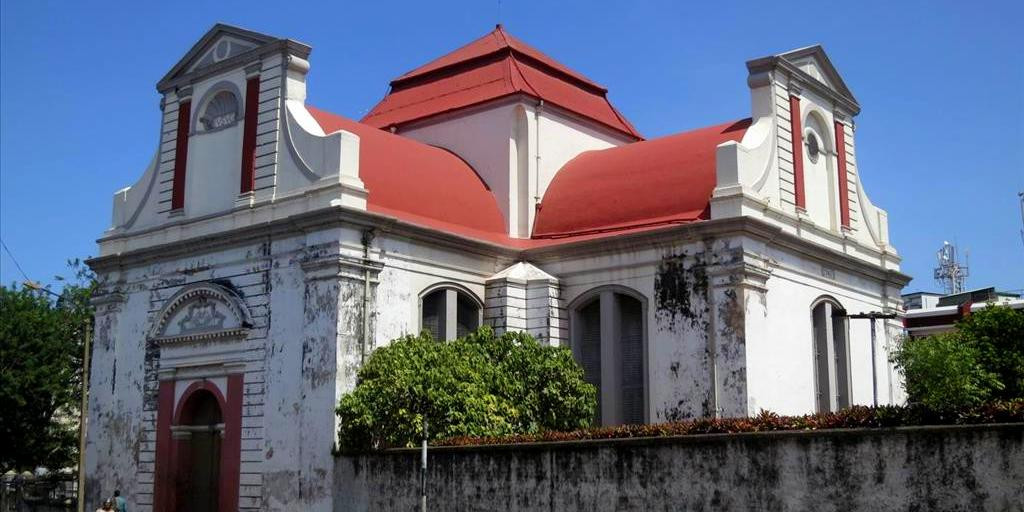
Key Features of Wolvendaal Church
-
Architectural Significance: The church is designed in the Doric style of the Dutch colonial era, featuring a solidly constructed edifice with thick walls and high arched windows, which were built to withstand the tropical climate. The roof is covered with Dutch tiles, and the floor is paved with gravestones of the Dutch governors and other high officials, which adds a historical depth to its structure.
-
Historical Importance: Wolvendaal Church serves as a crucial link to Colombo’s colonial past. It was built to serve the Dutch community in Colombo and has since become a symbol of the city's rich multicultural heritage.
-
Art and Artefacts: Inside, the church houses an array of Dutch colonial-era artefacts, including an ornately carved wooden pulpit, lectern, and pipe organ, some of which are considered to be the finest examples of Dutch church art in the world. The church also contains several antique furniture pieces that are of significant historical value.
-
Religious Services: Despite its age, Wolvendaal Church is still an active place of worship, holding regular services for the local congregation and visitors. This continuity of use adds a living dimension to its historical and architectural appeal.
-
Panoramic Views: Situated on a hillock, the church offers panoramic views of the surrounding area, which was originally a marshland (hence the name 'Wolvendaal', which translates to 'Valley of Wolves'). This strategic location underscores its historical role as a lookout and defensive point.
-
Educational Tours: The church provides guided tours that explain its history, architecture, and the role it has played in the religious and cultural life of Colombo. These tours are insightful for history buffs, architectural enthusiasts, and general visitors alike.
Visiting Wolvendaal Church is like stepping back in time. It offers a peaceful retreat from the bustling city life, while providing a glimpse into the historical and cultural fabric of Colombo. Its well-preserved architecture and artefacts not only attract those interested in history and architecture but also those looking to understand more about the impact of European colonialism in Asia. This historical church remains one of the most profound links to Colombo's Dutch colonial past and is a revered landmark in the city’s architectural and cultural landscape.
Colombo Nightlife
Colombo's nightlife offers a vibrant and diverse experience that caters to a wide range of tastes and preferences. From chic rooftop bars to energetic nightclubs and everything in between, the city comes alive at night with numerous options for entertainment and relaxation. Whether you're a visitor looking to experience the local party scene or a resident seeking a fun night out, Colombo has plenty to offer.
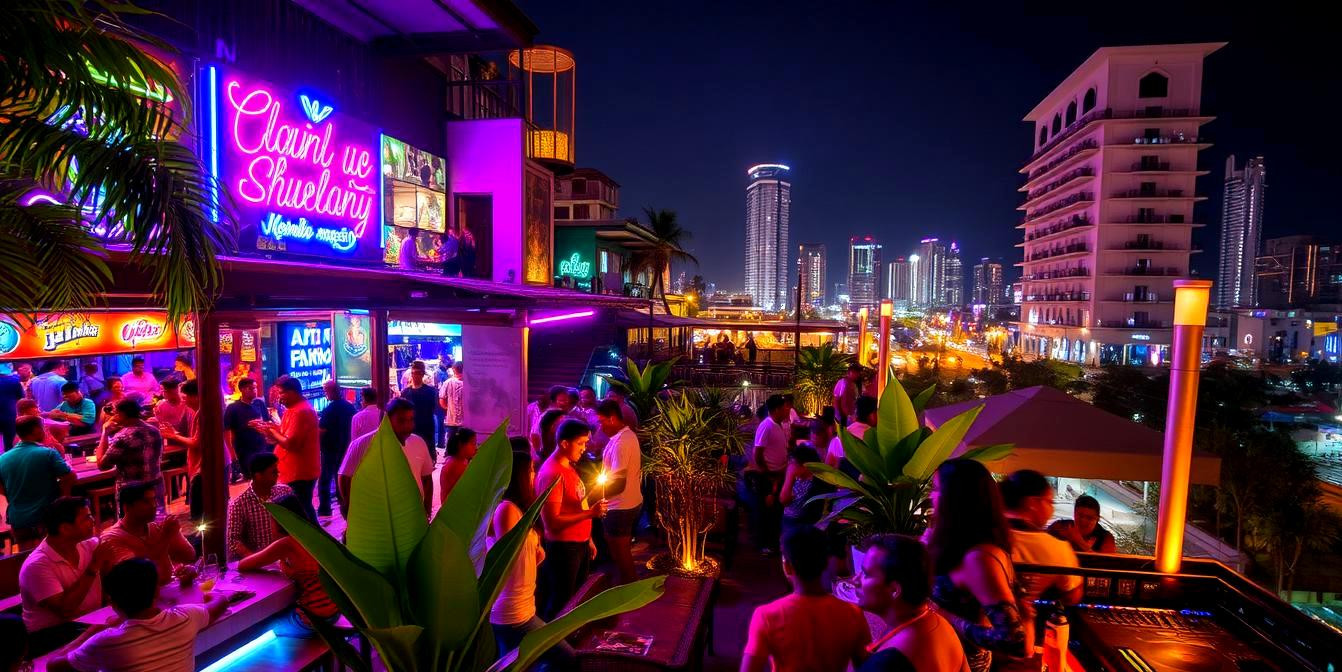
Key Highlights of Colombo Nightlife
-
Rooftop Bars: Enjoy stunning views of the city skyline from one of Colombo's stylish rooftop bars. Places like Cloud Red, which is one of the highest rooftop venues in the city, offer a fantastic ambiance with great cocktails and often, live music. These venues provide a perfect setting for a relaxed evening out, especially for those who appreciate a good view with their drink.
-
Nightclubs and Dance Floors: For those who love to dance the night away, Colombo’s nightclubs offer a range of music from international hits to local Sinhalese and Tamil beats. Clubs like Rhythm and Blues and Clique are popular among both locals and tourists for their lively atmosphere and great music.
-
Live Music and Performances: Many bars and venues in Colombo host live music nights featuring local bands and artists. These places offer a more laid-back vibe where you can enjoy genres ranging from jazz and blues to more contemporary tunes. The Music Room at Park Street Mews is a popular spot for live music enthusiasts.
-
Casual Pubs and Bars: For a more casual night out, Colombo has plenty of pubs and bars that offer a wide selection of local and international brews. These places are great for socialising and often have sports screenings, pub quizzes, and theme nights, making them ideal for a fun and engaging evening.
-
Fine Dining Restaurants: Some of Colombo's best nightlife can be found in its high-end restaurants that merge gourmet dining with elegant night-time ambiance. Restaurants like Ministry of Crab and Nihonbashi Honten provide not just exquisite food but also a sophisticated setting perfect for a night out.
-
Cultural Shows and Entertainment: For those interested in cultural entertainment, some venues offer traditional Kandyan dance performances and other cultural shows that make for a memorable evening, especially appealing to tourists wanting to experience local traditions.
-
Safety and Accessibility: Colombo is generally safe for night-time activities, with most venues located in well-populated and well-lit areas. The city’s nightlife spots are mostly concentrated in central areas like Fort, Cinnamon Gardens, and along the Galle Road, making them easily accessible by taxi or tuk-tuk.
Colombo's nightlife is as diverse as its culture, offering something for everyone. Whether you're looking to unwind after a day of sightseeing or planning to explore the city's vibrant party scene, Colombo’s array of nightlife options promises a memorable and exciting evening.
Tips for 10 Cool Things To Do In Colombo
Exploring Colombo can be an enriching experience when you have the right tips to guide you. Here are some detailed suggestions to make the most of your visit to this vibrant city:
-
Cultural Sites: Dress conservatively and remove shoes when entering religious sites. Timing your visit during local festivals can greatly enhance the experience with vibrant processions and ceremonies.
-
Museums: Allocate enough time for visits as there's a lot to absorb, especially in museums with extensive collections. Opting for a guided tour can provide deeper insights into the artefacts and their historical context.
-
Urban Parks: Late afternoon or early evening visits are ideal for enjoying cooler temperatures and stunning sunsets. Don’t miss out on trying local street foods from nearby vendors, offering everything from savoury snacks to sweet treats.
-
Markets: Wear comfortable shoes as you'll be on your feet a lot. Haggling is part of the shopping experience, so don’t hesitate to negotiate prices.
-
Lakes and Water Bodies: Evening times are perfect for tranquil boat rides. Visiting nearby temples or cultural structures during these times can also be particularly serene.
-
Street Art: Explore vibrant street murals through guided walking tours to understand the cultural narratives and artistic expressions behind each piece.
-
High-End Dining: Make reservations well in advance, especially in popular restaurants, to avoid disappointment. Adhering to a smart-casual dress code can enhance your dining experience.
-
Beaches: Weekday visits are less crowded. Protect yourself from the sun with sunscreen, a hat, and sunglasses, especially during midday hours.
-
Historic Churches: Familiarising yourself with the history of the site beforehand can make your visit more meaningful. Try to visit during quieter times for a more reflective experience.
-
Nightlife: Experience a mix of high-altitude bars for panoramic night views and vibrant dance clubs for lively entertainment. Ensure you have a safe way to return to your accommodation post-night out.
By keeping these tips in mind, you're set for a memorable exploration of Colombo's rich tapestry of experiences, balancing cultural depth with enjoyable leisure activities.
Ideal Time for 10 Cool Things To Do In Colombo
Exploring Colombo can be a wonderful experience year-round, but considering the seasonal variations can help you optimise your travel plans. Here's how to best enjoy various activities in Colombo across different seasons:
-
Dry Season (December to March): This is considered the best time to visit Colombo as the weather is predominantly dry with clear skies and cooler temperatures. It's ideal for outdoor activities like visiting parks, markets, and beaches, where you can enjoy the environment without the discomfort of rain and excessive heat. Cultural festivals and outdoor dining are particularly enjoyable during these months.
-
Monsoon Season (May to August): The southwest monsoon brings rain to Colombo, which can be heavy at times. While this might deter some outdoor activities, it's a great time to explore indoor attractions like museums and galleries. The rains also bring a lush, green vibrancy to the city, making scenic drives and walks in sheltered areas quite pleasant. Rainy days are perfect for experiencing the city's cafes and restaurants, and the weather can add a dramatic backdrop to architectural and street photography.
-
Intermittent Monsoon (September to November): During this period, weather conditions are variable with intermittent rains and sunny spells. This is a transitional season where you can enjoy both indoor and outdoor activities depending on the day. The weather is generally cooler and less humid than in the peak monsoon months, making it suitable for visiting a variety of attractions without the peak season crowds.
Each season in Colombo offers a unique perspective of the city and affects how you might plan your visit. Whether you prefer dry, sunny days for beach-going and walking tours, or cooler, rainy days for indoor exploration and enjoying the vibrant city atmosphere from cosy venues, Colombo has something special to offer throughout the year.
Colombo is a lively city with a wealth of experiences woven together to suit every tourist. From the historical depth of its museums and temples to the busy vibrancy of its markets and the calm beauty of its beaches, there is something for everyone. Colombo offers a memorable urban experience, whether you're interested in cultural investigation, gastronomic delights, or just soaking in beautiful vistas, combining traditional and contemporary elements. To appreciate the vibrant spirit of Colombo, Sri Lanka's capital, be sure to diversify your trip with a range of events.
FAQs for 10 Cool Things To Do In Colombo
Q: What are the best attractions to visit in Colombo?
A: The must-visit attractions in Colombo include the Gangaramaya Temple, the Colombo National Museum, Galle Face Green, Pettah Market, and Beira Lake.
Q: Is Colombo a good destination for families?
A: Yes, Colombo offers various family-friendly activities and locations such as Galle Face Green for kite flying and picnics, Mount Lavinia Beach for a fun day at the beach, and the Dehiwala Zoo.
Q: What are some unique activities to do in Colombo?
A: Unique activities in Colombo include exploring the street art in Slave Island, dining at the Ministry of Crab, and taking a scenic boat ride at Beira Lake.
Q: How can I explore the local culture in Colombo?
A: To immerse yourself in local culture, visit cultural landmarks like Wolvendaal Church, stroll through local markets such as Pettah Market, and participate in local festivals if your visit coincides with any.
Q: What are the best places for shopping in Colombo?
A: Pettah Market is great for a local shopping experience, while upscale shopping can be done at places like the Dutch Hospital Shopping Precinct and Colombo City Centre.
Q: Are there any entry fees for the attractions in Colombo?
A: Some attractions, like the Colombo National Museum and Gangaramaya Temple, charge a small entry fee, while places like Galle Face Green and Pettah Market are free to explore.
Q: What is the best time of day to visit Galle Face Green?
A: The best time to visit Galle Face Green is during the evening to enjoy the sunset and sample street food when the area is lively and bustling with activity.
Q: Can I find vegetarian food easily in Colombo?
A: Yes, Colombo has a wide range of dining options that cater to vegetarians, with many restaurants offering vegetarian and vegan menus.
Q: What is the best way to get around Colombo to see these attractions?
A: Colombo can be navigated by tuk-tuk, taxi, or bus. For convenience and to cover more ground quickly, hiring a taxi for the day is often recommended.
Q: Are there guided tours available for these top attractions in Colombo?
A: Yes, there are several guided tours available, which can offer insightful commentary and a structured way to explore the city's top sights.
For the Nepal tour, please click here.
If you are looking for different kinds of Nepal Tours or Trekking Packages, feel free to contact us.
